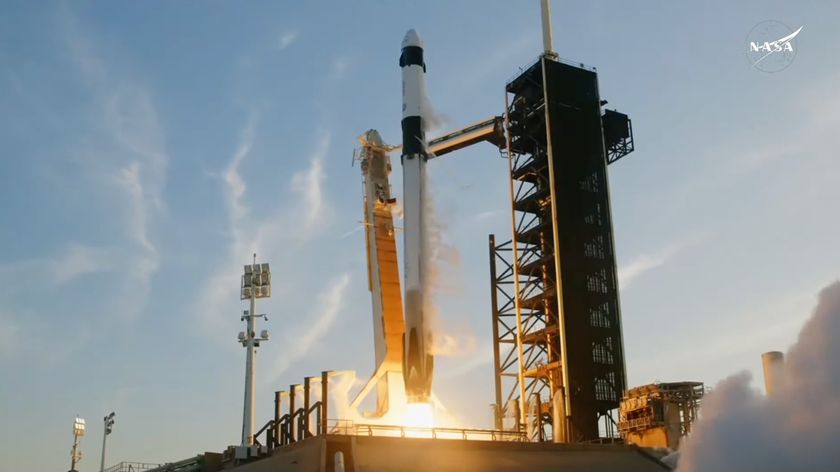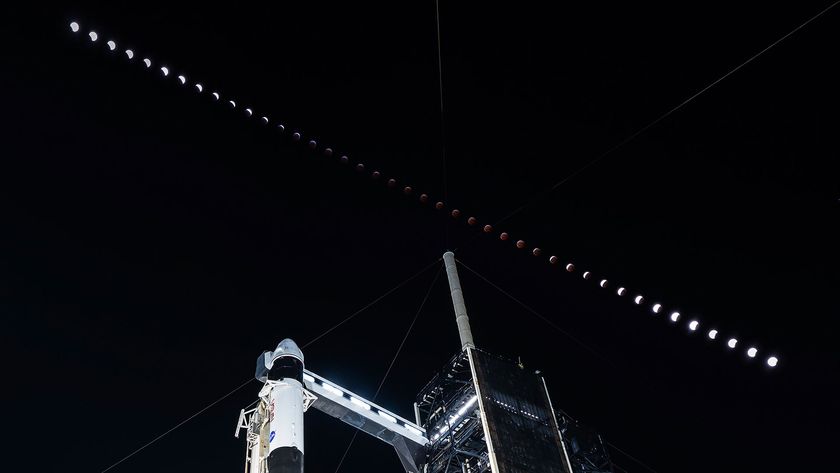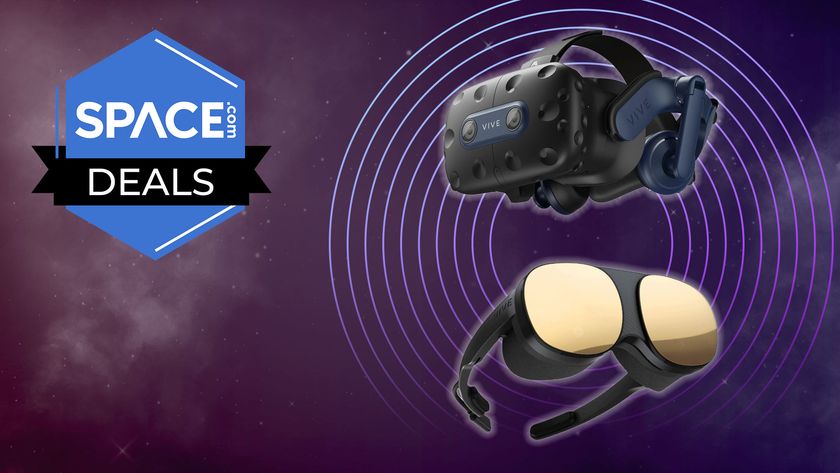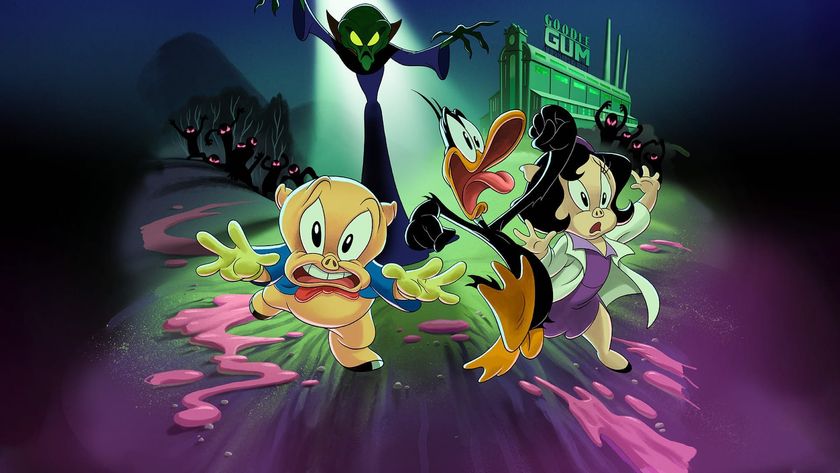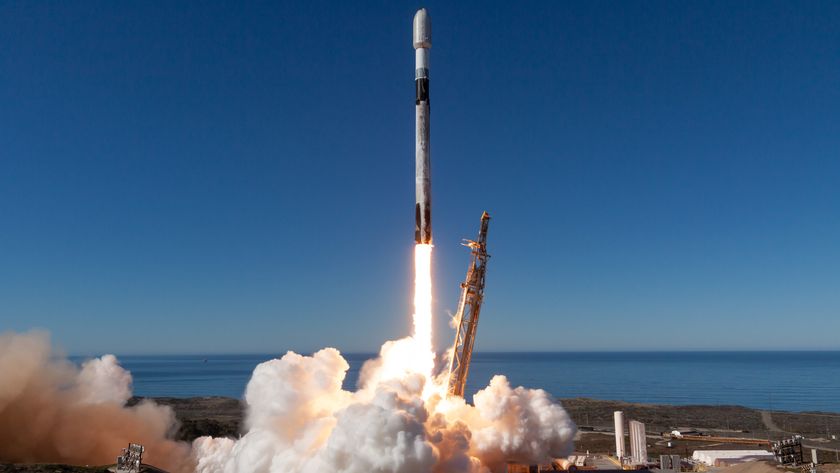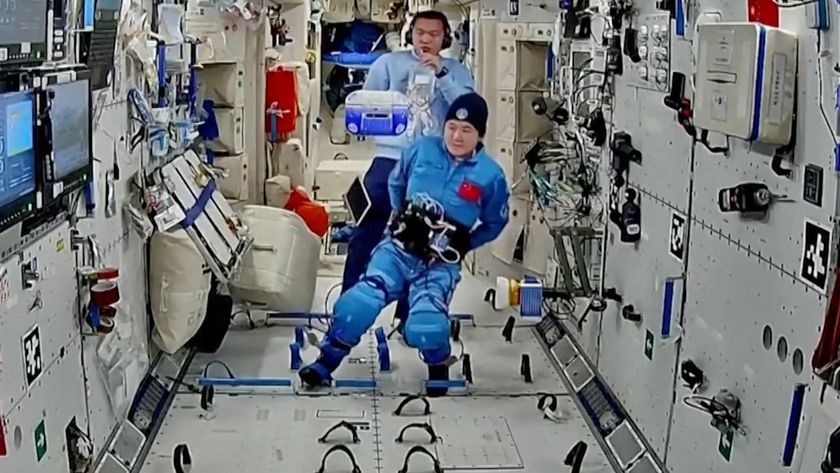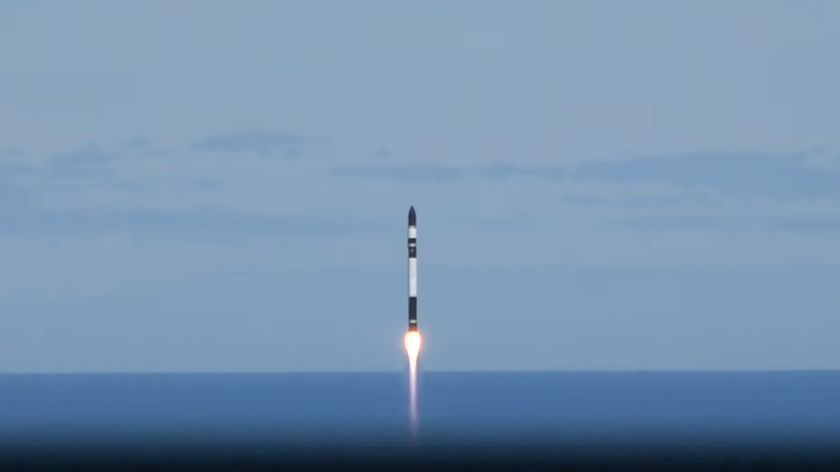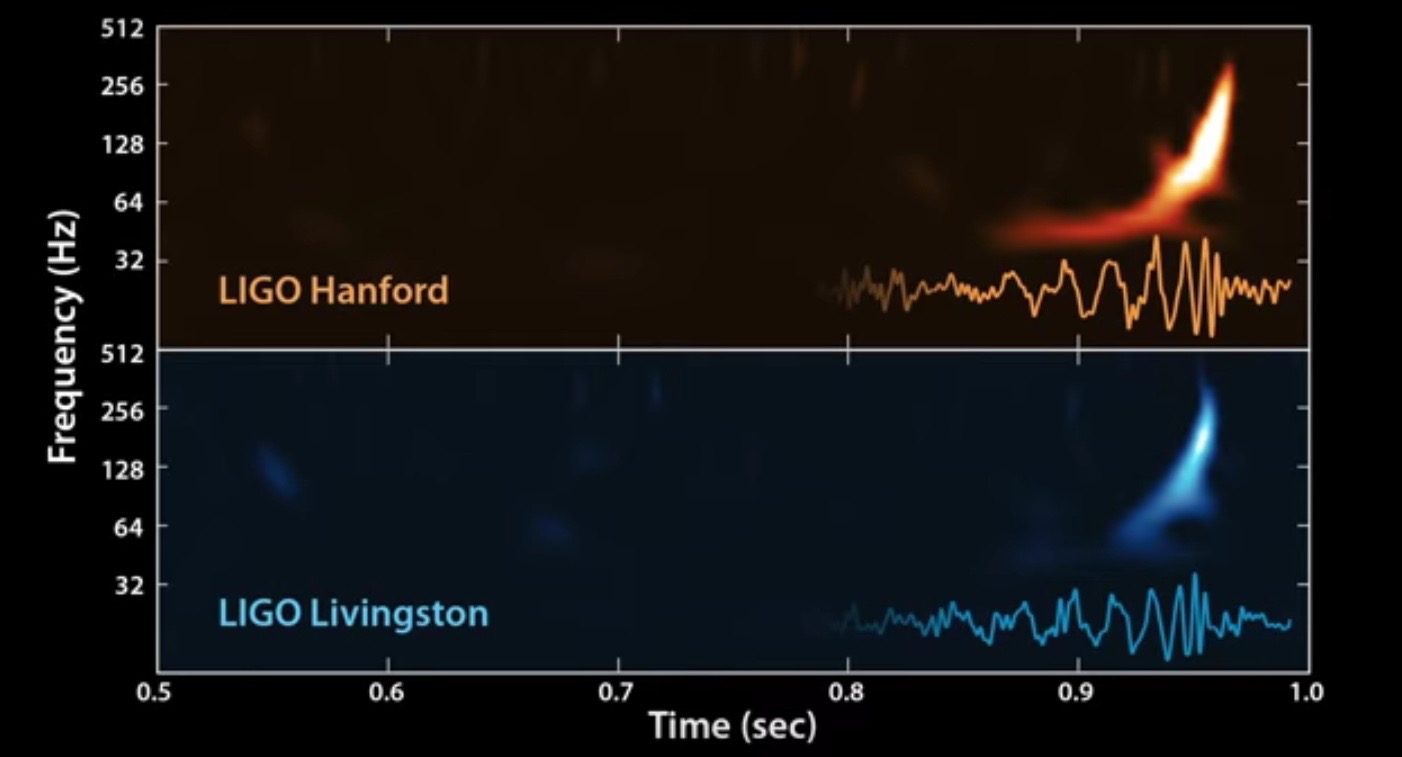
This would have blown Albert Einstein's mind: We now know what ripples in the fabric of space-time sound like.
On Thursday (Feb. 11), scientists with the Laser Interferometer Gravitational-Wave Observatory (LIGO) project announced that they had made history's first-ever direct detection of gravitational waves, mysterious phenomena first predicted a century ago by Einstein in his theory of general relativity.
LIGO's two detectors — one in Louisiana and the other in Washington state — recorded the space-time distortions caused by gravitational waves that were produced 1.3 billion years ago during the merger of two black holes.
LIGO records such distortions on a photodetector, based on how long it takes laser light to travel down both 2.5-mile-long (4 kilometers) arms of each L-shaped detector. But it's a relatively simple step to convert this information into sound waves, project team members said.
"We can hear gravitational waves. We can hear the universe," LIGO Scientific Collaboration spokeswoman Gabriela Gonzalez, a professor of physics and astronomy at Louisiana State University, said during a news conference Thursday.
"That's one of the beautiful things about this [detection]," she added. "We are not only going to be seeing the universe — we are going to be listening to it."
So, what do gravitational waves sound like? The original conversion to sound waves evokes the thump of a heartbeat, while an adjusted version designed to better accommodate the range of human hearing could be mistaken for a drop of water falling into a bucket.
Get the Space.com Newsletter
Breaking space news, the latest updates on rocket launches, skywatching events and more!
That's just my opinion, of course; Gonzalez described the frequency-shifted version as a "chirp." You can come to your own conclusions after listening to the gravitational-wave signal in this video.
LIGO team members report the gravitational wave detection in a new paper published Thursday in the journal Physical Review Letters. You can read it for free here: http://journals.aps.org/prl/abstract/10.1103/PhysRevLett.116.061102.
The LIGO project is led by scientists from the California Institute of Technology and the Massachussetts Institute of Technology, and funded by the U.S. National Science Foundation.
Follow Mike Wall on Twitter @michaeldwall and Google+. Follow us @Spacedotcom, Facebook or Google+. Originally published on Space.com.
Join our Space Forums to keep talking space on the latest missions, night sky and more! And if you have a news tip, correction or comment, let us know at: community@space.com.

Michael Wall is a Senior Space Writer with Space.com and joined the team in 2010. He primarily covers exoplanets, spaceflight and military space, but has been known to dabble in the space art beat. His book about the search for alien life, "Out There," was published on Nov. 13, 2018. Before becoming a science writer, Michael worked as a herpetologist and wildlife biologist. He has a Ph.D. in evolutionary biology from the University of Sydney, Australia, a bachelor's degree from the University of Arizona, and a graduate certificate in science writing from the University of California, Santa Cruz. To find out what his latest project is, you can follow Michael on Twitter.


